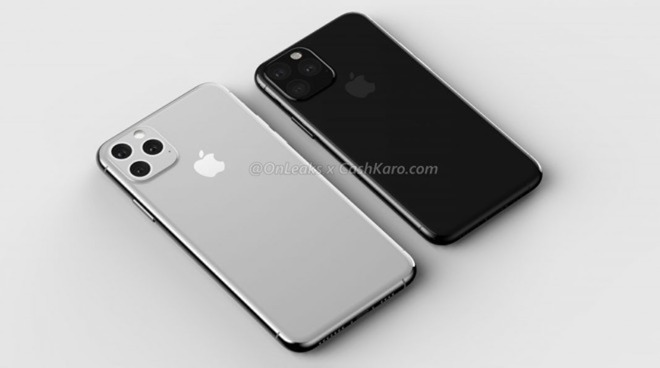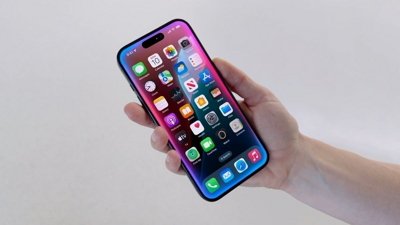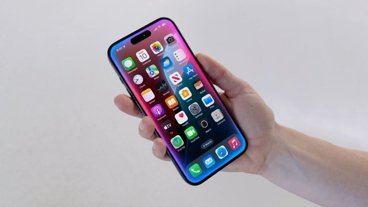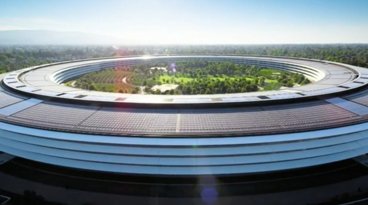Less than a week before Apple reveals its next-generation iPhones, Cowen forecasts Apple will start shipping the new models towards the end of September, but predictions of a second-generation iPhone SE and other future potential changes to the iPhone are seen somewhat more favorably.
For the 2019 iPhone, a Cowen investor note seen by AppleInsider reiterates some of the analyst estimates for the 2019 iPhone range, which were previously deemed to be relatively flat compared to 2018's releases. Approximately 79 million units of the 2019 models will be constructed in the second half of the year, making up 72% of all iPhone units constructed during that time.
"We expect the latest iPhones could be ready to ship by late September as our checks suggest the ramp of production and yields are nominal," writes Cowen. On a quarterly basis, Cowen forecasts 44 million builds in the third quarter of 2019 and 65 million in the fourth quarter, slightly up from their previous shipment and sell-in forecasts of 42.5 million and 63 million respectively.
The lion's share of iPhone construction will be for the 6.1-inch LCD-equipped iPhone XR replacement, making up 33 million units of the total for the second half of the year. Of the OLED-based versions, the smaller 5.8-inch version will see 17 million units constructed while the larger 6.5-inch variant will make up 29 million units.
For the future, Cowen leans into rumors of a second-generation iPhone SE being on the way, due in the first half of 2020 according to Cowen's field work. The second-generation version is believed to have an LCD-based 4-inch or 4.7-inch display, and use a 7-nanometer A-series processor.
"We expect the low-cost device to appeal to users who prefer the smaller form factor as well as price sensitive consumers, especially those in emerging markets," Cowen states.
As for the 2020 iPhones, Cowen highlights Qualcomm's supply agreement to provide 5G modems, which will lead to a 5G-equipped iPhone. Apple's pending acquisition of Intel's modem business will transition Intel's 4G modem supply internally "within the coming year."
One major futuristic technology is foldable OLED screens, which Cowen thinks based on supply chain work to be adopted by the mainstream within a year or two "given some of the ongoing materials engineering challenges that need to be solved." Cowen's comments are seemingly for the smartphone industry as a whole, rather than specifically for Apple.
 Malcolm Owen
Malcolm Owen







-m.jpg)







 Amber Neely
Amber Neely

 Wesley Hilliard
Wesley Hilliard


 William Gallagher
William Gallagher










3 Comments
The next 5 years in evolution of computers, smartphones, tablets, hybrids, wearables and etc. will be interesting, phones are made more personal and utilitary all the time. There are drivers licences on the smartphones, student ID cards maybe passports at some point. We can do our banking on them and pay at some cashiers. We can save health data and get feedback on our health and whatnot. As smartphones they creep more deeper into our daily lives will they at one point become mandatory rather than a commodity that they are now.
I find foldables interesting, but the kind of foldable phone I'd ever buy is more in the realm of Sci-Fi than possible. More I'd like tablet with a full desktop OS or a phone with capability for it. Like Ubuntu phone back in the day was very interesting for me, Dex is not nearly there and I'll not be buying Android phones with the experiences I've had with them. I'd rather have a solid slab with ports than a crease in the middle.
You have forgot phones vs. wearables.
There will be big trend to wearables, voice assistants and AI. I can imagine optimal configuration capable watch with AirPods that can provide many function by voice commands so need for phone will be diminished but will be complemented by foldable iPad, bigger or smaller, with more desktop like features.
Or, Jesus, I would forgot AR glasses. They can supplement phone and in some situations tablet as well.
Well sure, but I can’t personally see wearables at least watches replacing phone for at least banking and having picture IDs in them, but surely there could be a way at some point with biometric confirmation and NFC chips and so on. But in 5 years I wouldn’t bet on it. AR glasses might bring a lot possibilities even in near future, personally I wouldn’t use them. Until I have to use glasses...
I can only speak for myself and in my opinion foldables that would be the true phone/tablet or mini tablet/big tablet or maybe foldable three or more times is Sci-Fi and never really viable, due to battery sizes and other internal elements that demand space and materials than can handle year on bending and folding. But hey, I’d rather be wrong, they seem interesting.
Maybe one day we live in a Ghost in the Shell type world where we have brain implants and whatnot, can’t imagine the interface in that case at all. Back to 5 years and reality, I think I’ll be getting that Apple Watch since my over a decade old Suunto gear is almost unusable. So I’ll be getting on that sweet wearable market boom.
Love the possibilities, but as I don’t work on any of these devices I can only imagine and dream with no real educated guesses.